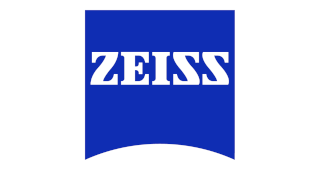Investigation of the function of the sympathetic nervous system in patients with failed back surgery syndrome, treated with spinal cord stimulation
EANS Academy. Goudman L. 10/06/21; 339533; EP08031

Dr. Lisa Goudman
Contributions
Contributions
Abstract
Background: The origin of the persisting element in the pain experience of patients with Failed Back Surgery Syndrome is still unknown, making a successful treatment difficult to execute. Spinal Cord Stimulation (SCS) is one of the well-known treatment options for these patients. The exact working mechanisms of SCS are not yet fully unraveled, however, a potential target of SCS is the autonomic nervous system. In chronic pain patients, a disbalance between sympathetic (SNS) and parasympathetic systems (PNS) is often observed. The aim of this study is to evaluate the potential influence of SCS on the functioning of the sympathetic nervous system in patients suffering from FBSS.
Methods: Twenty-three patients with FBSS who are treated with SCS participated in this study. For all patients, skin conductance (as a measure of sweat gland function) was measured on the upper and lower limbs during SCS off and on states. Additionally, patients were asked to rate their pain intensity on a Visual Analogue Scale during both SCS states. Paired Wilcoxon tests were used to compare skin conductance between SCS on and off states.
Results: Pain intensity ratings for low back pain and leg pain significantly decreased when SCS was activated. No significant differences were found for skin conductance levels on the lower limb (p=0.191) and upper limb (p=0.78) between both SCS states.
Conclusions: Based on the results of this study, experimentally influencing SCS states does not seem to alter skin conductance levels. This leads to the hypothesis that SCS is not inducing an influence on the orthosympathetic nervous system.
Methods: Twenty-three patients with FBSS who are treated with SCS participated in this study. For all patients, skin conductance (as a measure of sweat gland function) was measured on the upper and lower limbs during SCS off and on states. Additionally, patients were asked to rate their pain intensity on a Visual Analogue Scale during both SCS states. Paired Wilcoxon tests were used to compare skin conductance between SCS on and off states.
Results: Pain intensity ratings for low back pain and leg pain significantly decreased when SCS was activated. No significant differences were found for skin conductance levels on the lower limb (p=0.191) and upper limb (p=0.78) between both SCS states.
Conclusions: Based on the results of this study, experimentally influencing SCS states does not seem to alter skin conductance levels. This leads to the hypothesis that SCS is not inducing an influence on the orthosympathetic nervous system.
Background: The origin of the persisting element in the pain experience of patients with Failed Back Surgery Syndrome is still unknown, making a successful treatment difficult to execute. Spinal Cord Stimulation (SCS) is one of the well-known treatment options for these patients. The exact working mechanisms of SCS are not yet fully unraveled, however, a potential target of SCS is the autonomic nervous system. In chronic pain patients, a disbalance between sympathetic (SNS) and parasympathetic systems (PNS) is often observed. The aim of this study is to evaluate the potential influence of SCS on the functioning of the sympathetic nervous system in patients suffering from FBSS.
Methods: Twenty-three patients with FBSS who are treated with SCS participated in this study. For all patients, skin conductance (as a measure of sweat gland function) was measured on the upper and lower limbs during SCS off and on states. Additionally, patients were asked to rate their pain intensity on a Visual Analogue Scale during both SCS states. Paired Wilcoxon tests were used to compare skin conductance between SCS on and off states.
Results: Pain intensity ratings for low back pain and leg pain significantly decreased when SCS was activated. No significant differences were found for skin conductance levels on the lower limb (p=0.191) and upper limb (p=0.78) between both SCS states.
Conclusions: Based on the results of this study, experimentally influencing SCS states does not seem to alter skin conductance levels. This leads to the hypothesis that SCS is not inducing an influence on the orthosympathetic nervous system.
Methods: Twenty-three patients with FBSS who are treated with SCS participated in this study. For all patients, skin conductance (as a measure of sweat gland function) was measured on the upper and lower limbs during SCS off and on states. Additionally, patients were asked to rate their pain intensity on a Visual Analogue Scale during both SCS states. Paired Wilcoxon tests were used to compare skin conductance between SCS on and off states.
Results: Pain intensity ratings for low back pain and leg pain significantly decreased when SCS was activated. No significant differences were found for skin conductance levels on the lower limb (p=0.191) and upper limb (p=0.78) between both SCS states.
Conclusions: Based on the results of this study, experimentally influencing SCS states does not seem to alter skin conductance levels. This leads to the hypothesis that SCS is not inducing an influence on the orthosympathetic nervous system.
{{ help_message }}
{{filter}}




